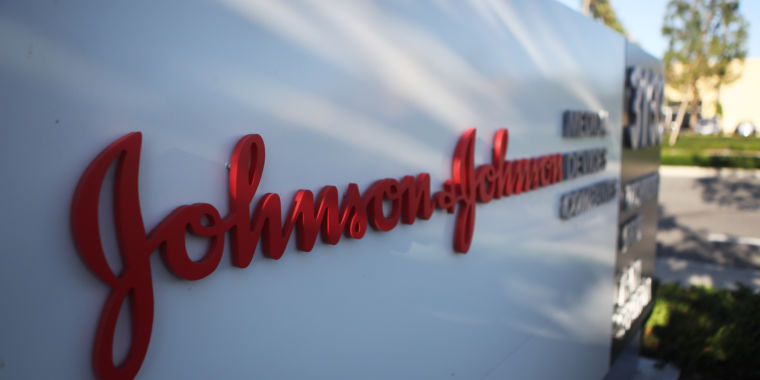
Now there are 3–.
An FDA advisory committee voted Friday 22 -0 in favor of authorization.
UPDATE, February 27, 2021 7: 20 pm EST: The United States Food and Drug Administration on Saturday evening granted emergency situation usage authorization for Johnson & Johnson’s COVID-19 vaccine. The vaccine is the 3rd authorized in the US and the first to need just a single shot, which can be delivered at refrigerator temperatures.
” The permission of this vaccine broadens the availability of vaccines, the best medical avoidance method for COVID-19, to help us in the battle versus this pandemic, which has declared over half a million lives in the United States,” acting FDA Commissioner Janet Woodcock stated in a statement
The vaccine uses a non-replicating adenovirus (Ad26)– a kind of virus that causes colds– to deliver the hereditary plans of the SARS-CoV-2 spike protein to cells. The FDA authorized it for use in individuals ages 18 and older.
” After a thorough analysis of the information, the FDA’s scientists and doctors have actually determined that the vaccine satisfies the FDA’s expectations for security and effectiveness appropriate for the authorization of a vaccine for emergency situation use,” Peter Marks, director of the FDA’s Center for Biologics Examination and Research study, stated. “With today’s permission, we are adding another vaccine in our medical tool kit to eliminate this infection. At the same time, the American people can be ensured of the FDA’s undeviating dedication to public health through our detailed and extensive evaluation of the data sent for vaccines to prevent COVID-19”
Original story, February 26, 2021 5: 17 pm EST: After a day-long meeting Friday, an advisory panel for the US Food and Drug Administration voted 22 to 0 to suggest providing an Emergency situation Use Permission for Johnson & Johnson’s single-shot, refrigerator-stable COVID-19 vaccine.
If the FDA accepts the panel’s recommendation and grants the EUA– which it likely will– the nation will have a third COVID-19 vaccine authorized for use. Earlier this week, FDA scientists launched their review of the vaccine, endorsing permission Today’s panel, the FDA’s Vaccines and Related Biological Products Advisory Committee (VRBPAC) went through the data even more.
” It’s a relatively simple call,” Eric Rubin, a Harvard scientist and voting member of the VRBPAC stated after the vote. “[The vaccine] clearly gets way over the bar and it’s nice to have a single-dose vaccine … the need is so large [for vaccines], it clearly has a place.”
Agency watchers expect the FDA to move quickly on the decision, possibly approving the EUA as early as tomorrow, February27 The FDA moved that quick in approving EUAs for the two formerly licensed vaccines, the Moderna and Pfizer/BioNTech mRNA vaccines.
In addition, an advisory panel for the Centers for Illness Control and Avoidance that makes suggestions on vaccine usage has set up an emergency conference for this Sunday to talk about the vaccine’s use, additional strengthening speculation that the federal government will move rapidly to license and roll out the vaccine. If all of the pieces fall in line, doses of Johnson & Johnson’s COVID-19 vaccine could begin shipping to vaccination websites early next week.
The rollout won’t be a huge burst of new doses right now, though; it will likely be a slow roll. In congressional testament this week, a Johnson & Johnson executive stated that the business would offer 4 million doses after the EUA, with an overall of 20 million all set by the end of March and an overall of 100 million by the end of June. Still, with the vaccine only requiring a single shot, those 100 million dosages relate to 100 million individuals secured.
Efficacy
According to an in-depth FDA review of Phase III clinical trial information sent by Johnson & Johnson, the vaccine was 66 percent reliable at preventing moderate to severe COVID-19 at 28 days after vaccination. (Johnson & Johnson defined moderate cases to include cases that had two signs, such as cough and fever, which would have been classified as just “symptomatic” infections in other trials.)
The international trial, which included over 44,00 0 individuals in different trial websites, had various efficacies in various places.
Reassuringly, the efficacy versus extreme and critical illness was high across the board in all of the trial locations and across age groups. By area, effectiveness against extreme disease in the US was at 86 percent, 82 percent in South Africa, and 88 percent in Brazil.
In addition, Johnson & Johnson has a 30,00 0-person trial in progress testing whether including a booster shot will further increase effectiveness.
Negative effects
As for side effects, the vaccine has a “beneficial security profile,” according to the FDA. It’s uncertain if these conditions were related to the vaccine.
While anaphylaxis has been an uncommon however recorded incident with the mRNA vaccines, it appears to be less of a threat with Johnson & Johnson’s vaccine. There was a single case of a serious hypersensitivity reaction two days after vaccination that was thought about likely related to the vaccine.
No comments:
Post a Comment